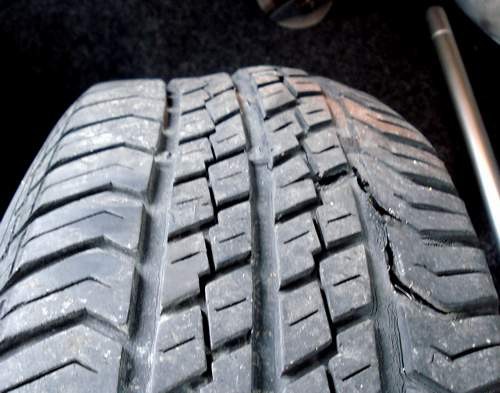How Long Do Tyres Last and How Can I Make Them Last Longer?

How long do tyres last? There is no straightforward answer to this question, as a number of factors can affect a tyre’s lifespan. However, as a general rule of thumb, you should consider most tyres to have a lifespan of around five years.
Once they pass the five year mark, you may still be able to drive on your tyres for a while. However, you should keep an eye out for cracks, bumps, and other signs of wear and tear. And at least once a year, you should also get your tyres checked by a professional as part of a car service. They’ll be able to advise you on whether or not it’s time to replace your tyres.
How To Avoid Premature Tyre Wear and Tear
Here are some things that can affect your tyres’ lifespan:
Tyre Pressure – Over- or underinflating your tyres can lead to rapid and uneven wear and tear. Check your car’s user manual for the optimum tyre pressure. Try to check your tyres’ pressure at least once a fortnight, so you can increase or decrease it as necessary.
Road Surfaces – Regularly driving on rough road surfaces can damage your tyres. Driving over bumps or potholes can also take its toll.
Wheel Alignment – If your car’s wheels are unaligned, or if they’re unbalanced, then your tyres won’t roll with maximum efficiency. This can lead to premature wear to their outer edges.
Temperature – Excessive temperatures – whether it’s too hot or too cold – can accelerate rubber degradation. Unfortunately, unless you have somewhere secure to keep your car, there’s not much you can do to protect your tyres from the seasons. Though some drivers use “standard” tyres in the summer before switching to winter tyres once it gets colder.
Do Front Tyres Wear Quicker?
Front tyres tend to wear quicker than rear tyres. Most cars are front-wheel drive, with no rear-wheel drive. This means that the front tyres will be subjected to much more traction than the rear tyres, whenever you turn and brake.
Also, if you drive over a bump or a pothole, it’s likely that your front tyres will receive a greater “shock” than your rear tyres.
How To Check The Age Of Your Tyres
There are numerous figures printed on the side of your tyres. Look for some figures marked with the letters DOT. This indicates the date on which the tyres were manufactured. It will be followed by a four-digit number, which will tell you the week and the year the tyres were made.
For example, if the DOT on your tyres is 0320, this means they were manufactured in the third week of 2020.
If you check your tyres and find the DOT was five years or more ago, then get your tyres checked by a professional as part of a car service at least once a year.
Should You Replace All Tyres At Once?
The age and quality of your tyres will have an impact on your car’s handling, acceleration, braking, and feel. If you have two different tyres on one axle – one old, one new – there’ll be an imbalance. One tyre will have better grip and resistance than the other. This will affect your drive and, potentially, your road safety.
So you may not have to replace all four of your car’s tyres at once. But it’s a very good idea to change your tyres in pairs.
However, if your car has All Wheel Drive (AWD), then you may need to change all four tyres at once. AWD systems work through sending the right amount of torque to each wheel to optimise your control. If even one tyre is different to the others, it can affect the car’s computer reading, which could damage the system in the long-term.
How Much Should It Cost To Replace All Your Tyres?
The amount you pay for new tyres will largely depend on the make and model of your car. If your car’s an older model, for example, new tyres might be a little harder to source.
You’ll also have a choice of “budget” and “premium” tyres. You might get by with budget tyres if you don’t drive your car too often. But if you drive regularly, budget tyres might wear out much quicker than more premium tyres, so buying them might be a false economy.
Your garage may charge you extra for fitting, and for services such as wheel balancing. So shop around for the best price.
Further Resources About Tyre Safety
You’ll find numerous guides on our site to help you understand tyres and tyre safety:
Keep an eye on your tyres, and change them whenever necessary, and you should be able to depend on them without any problems. But for total peace of mind, add breakdown cover to your car insurance when you buy it. That way, if you do get a flat tyre while on the road, you can get the support you need as fast as possible.







